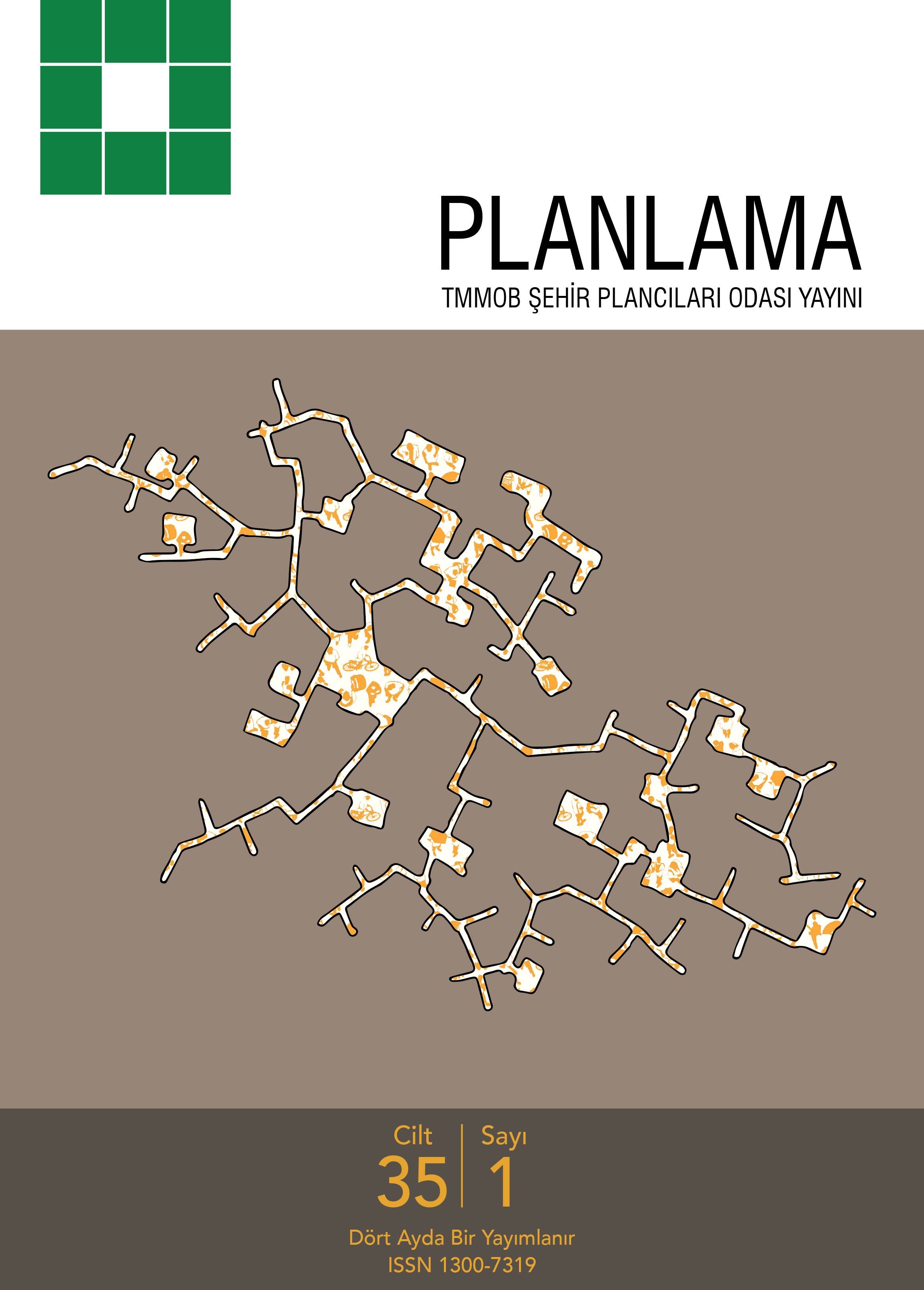Analysis of the Current Dynamics of Gentrification: "Studentification" Process and its Impact in Serinyol/Antakya Case
Ahmet Suvar Aslan, Bilge ÇakırHatay Mustafa Kemal University, Faculty of Architecture, Department of City and Regional Planning, HatayThe concept of gentrification has been transformed since the first day the concept emerged. Today, the definition of gentrification, its spatial scale, and its geographical location has changed and the definition has been reconceptualized. One of the new gentrification concepts introduced at the beginning of the 21st century is the concept of "studentification", which was translated into our language as "öğrencileştirme". This study examines the spatial and social transformation in the region where Alahan, Anayazı, Derince, Serinyol and Zülüflühan neighborhoods are located around the main campus of Hatay Mustafa Kemal University, which was the first university of Hatay and established in 1992, on the basis of the concept of "studentification", and tries to explain the process through the effect of the concept on the city's rural neighborhoods. The university campus chooses a place in the rural area of Antakya, has led to a social and spatial transformation through students. The study shows that this transformation has developed in favor of capital owners and establishes the relationship between studentification and gentrification in rural areas. In the study, where a rural area differentiated from the city center by being reshaped in line with the needs of students, thus the area is urbanized under the leadership of studentification, the capital owners can have a say in the development decisions of the area according to their economic power, changes are experienced in the physical landscape, and the low-income is indirectly displaced are among the significant findings.
Keywords: Antioch, housing policy; studentification; gentrification.Soylulaştırmanın Güncel Dinamiklerinin Bir Analizi: Serinyol/Antakya Örneğinde "Öğrencileştirme" Süreci ve Etkileri
Ahmet Suvar Aslan, Bilge ÇakırHatay Mustafa Kemal Üniversitesi Mimarlık Fakültesi, Şehir ve Bölge Planlama Bölümü, HataySoylulaştırma kavramı, kavramın ilk ortaya çıktığı günden bugüne dönüşmüştür. Günümüzde soylulaştırmanın tanımı, mekânsal ölçeği, görüldüğü coğrafi konumu değişmiş ve tanım yeniden kavramsallaştırılmıştır. 21. yüzyılın başında yapılan yeni soylulaştırma kavramlarından biri de öğrencileştirme olarak dilimize çevrilen studentification kavramıdır. Bu çalışma Hatayın ilk üniversitesi olan ve 1992 yılında kurulan Hatay Mustafa Kemal Üniversitesinin ana yerleşkesi çevresindeki Alahan, Anayazı, Derince, Serinyol ve Zülüflühan Mahallelerinin bulunduğu bölgedeki mekânsal ve toplumsal dönüşümü öğrencileştirme kavramı temelinde incelemiş ve bu kavramın kentin kırsal özelliğe sahip mahallelerine olan etkisi üzerinden süreci açıklamaya çalışmıştır. Antakyanın kırsal bölgesinde yer seçen üniversite yerleşkesi, öğrenciler aracılığı ile toplumsal ve mekânsal bir dönüşüme yol açmıştır. Çalışma yaşanan bu dönüşümün sermaye sahipleri lehine geliştiğini göstermekte ve kırsal alandaki öğrencileştirme ile soylulaştırma arasındaki ilişkiyi kurmaktadır. Kırsal karaktere sahip bir bölgenin öğrencilerin ihtiyaçları doğrultusunda yeniden şekillenerek kent merkezinden farklılaştığı, böylece öğrencileştirme öncülüğünde alanın kentleştiği, sermaye sahiplerinin ekonomik güçlerine göre alanın imar kararlarında söz sahibi olabildiği, fiziksel peyzajda değişimlerin yaşandığı, dar gelirlilerin dolaylı da olsa yerinden edildiği bir sürecin gerçekleştiği, bu çalışmada elde edilen önemli bulgular arasındadır.
Anahtar Kelimeler: Antakya, konut politikası; öğrencileştirme; soylulaştırma.Manuscript Language: Turkish













